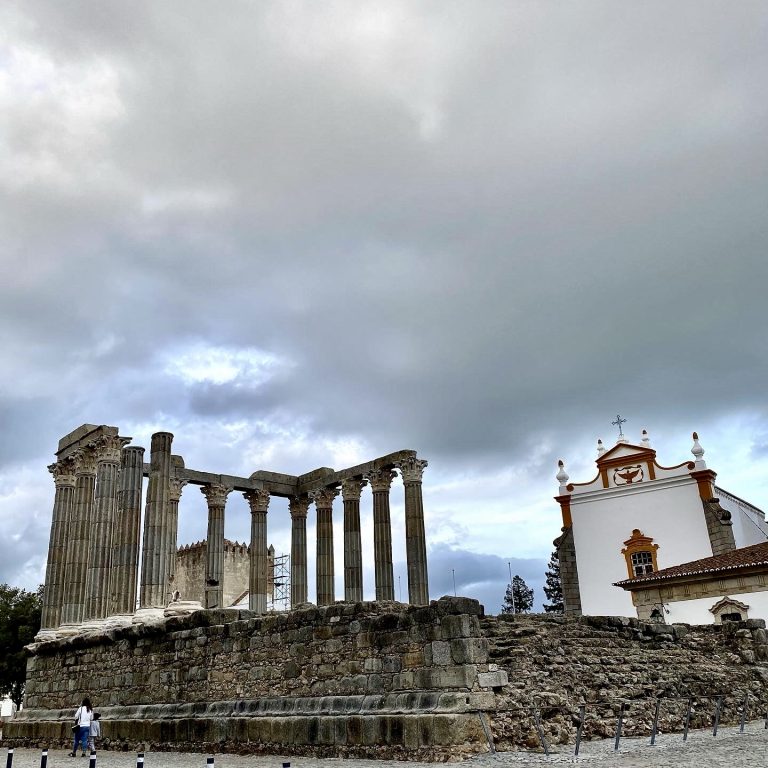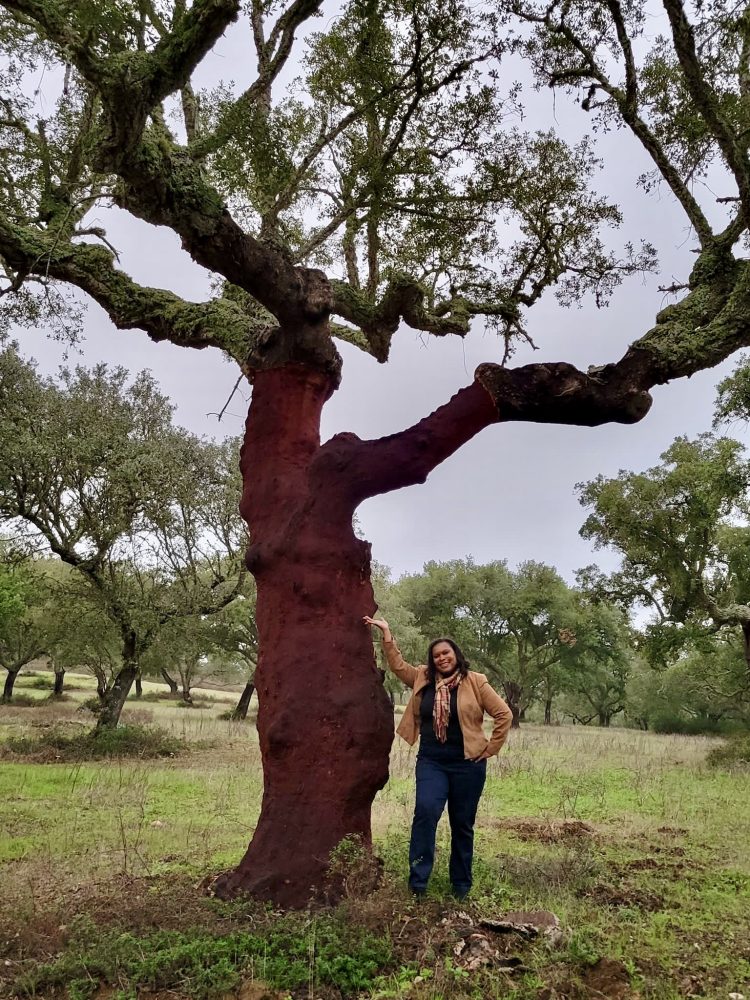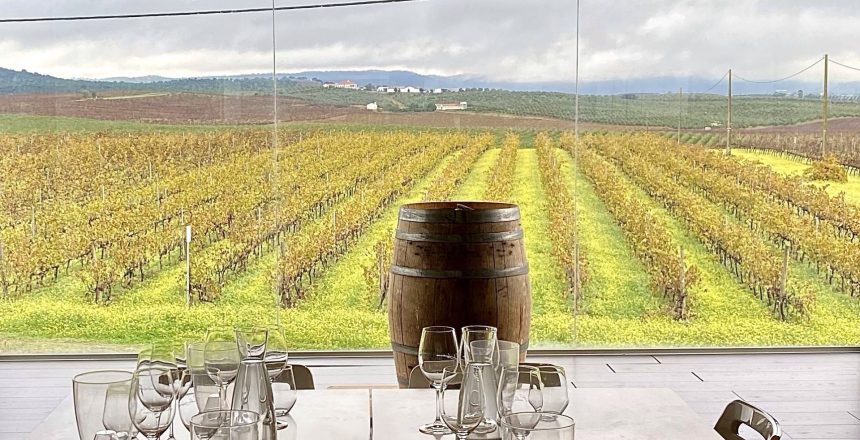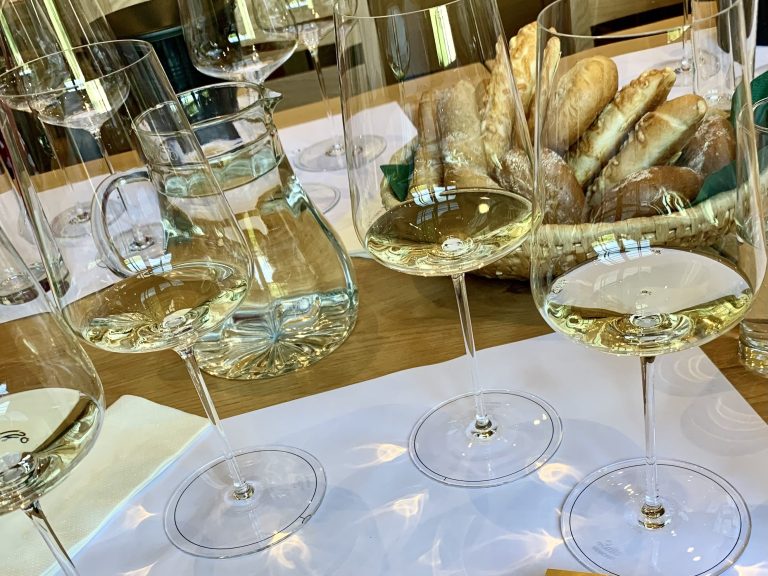Along with Anguilla, Alentejo is one of those places I visited recently that really spoke to my heart. Located in southern Portugal and a short drive from Lisbon (about an hour and a half), the Alentejo region is full of raw beauty. With sunny days tempered by cool, breezy nights, it is blessed with wide open spaces, gentle plains, and blue skies that go on forever. Yeah, except when I was there and then it rained. Like the whole time. I can’t tell you how many people told me that it rarely rains in Alentejo while I was struggling with my poodle hair and giving the side-eye to everyone. LOL! Anywho, I loved the laid-back vibe and the people were cool as a fan. I totally felt comfortable and would absolutely live there. And yes, I so enjoyed the food and wine. So yes, I insist that you visit Alentejo sooner rather than later.
People may not realize it, but there is more to Portuguese wine than (quite delicious) fortified port wine. Long before touching a toe down in southern Portugal, I’d enjoyed and shared with anyone that would listen how great the wines of Alentejo were. Here’s a clue: they are even better in the motherland. Here are 7 reasons to get your butt on a plane and head on over to Portugal to visit Alentejo.

It’s The Wine of the People
If your homies are drinking it, then there must be something to it. One in every three bottles of wine consumed in Portugal comes from Alentejo. And to put this in perspective, Portugal has fourteen different wine regions including those responsible for providing us with tasty Port and Vinho Verde.
All About Sustainability
Alentejo is a pioneer in sustainability and serves as a benchmark for other regions. With its Wines of Alentejo Sustainability Plan, the region is committed to being stewards of the land.

Whether it is reduction in pesticides, improvements in soil health, conservation of scarce resources, community involvement, or worker welfare, the plan has the backing of many producers in the region. When you look out for your people and your community, you definitely get my attention.
Variety, Variety, Variety
Alentejo lets us bust out of our comfort zones. For some it’s a con, but for me it’s totally a pro that Alentejo is hyper-focused on cultivating its native wine grapes. Portugal as a whole ranks second in the world with the largest number of indigenous varieties.






In Alentejo, wines like Alicante Bouschet, Castelão, Aragonez (Tempranillo), Antão Vaz, Arinto, and Trincadeira regularly make an appearance. Of course, there are some international varietals that find their way into blends, including Cabernet Sauvignon and Syrah, but the stars are definitely the home-grown grapes. And don’t let the fact you can’t pronounce a grape stop you from trying it.
Home to Évora, a UNESCO World Heritage Site
The capital of the Alentejo region, Évora, gives us great architecture, enchanting history, and tasty food to boot.





I loved walking through the cobbled streets past the white-washed buildings with their decorative tiles. It felt like stepping back in history while also enjoying the charm of a modern European square. I may have gotten lost around a corner or two!
Tasty Food
As the so-called “bread basket” of Portugal, due to all of the cereal grains produced there, farming is at the heart of what Alentejo does. We’re talking gastronomy, with a capital “G.”






As a bread-lover, I loved seeing dishes like migas (bread-based stuffing cooked in pork fat), açorda (bread soup), not to mention the colorful, fabric bread bags known as a “talego” that were always full of fluffy baked bread. Of course with all that bread, olive oil isn’t far behind. Olive trees have been planted in Alentejo for thousands of years and the oils are exceptional. And given Portugal’s vast coastline, there is no shortage of seafood available. I could have eaten octopus at every meal! For your meat eaters, the Alentejo black pig is one of the most renowned ingredients in the region. There are so many delicious pork dishes (smoked sausage, pork shoulder, cured ham) that I found myself wishing that Mr. Corkscrew was with me as he worships the pig. Sounds like a repeat trip is in order.
Its the Land of Corks
Driving through Alentejo, you don’t have to look far to spot a cork forest. For me, it was such a cool thing to see these trees with sections of bark shaved off. But don’t worry, this process does not harm the trees at all. In fact, they live for almost 200 years!




A tree must be at least 25 years old to be harvested for the first time. Thereafter, it’s harvested every nine years. To be sure, Alentejo, is a major hub for cork production, supplying a significant portion of the world’s wine corks. Just like for grains and grapes, the region’s favorable climate and soil conditions makes it a great place for the trees to grow. The tradition of cork harvesting has a long history in the region thanks to the sustainable harvesting practices employed, and has set Alentejo up as a primary global producer of high-quality cork. Harvesting of cork is done by skilled workers who often pass their know-how down to future generations. The industry provides a significant economic and cultural impact in Alentejo.
Delicious & Affordable Wine
One of the things that always strikes me with the wines of Alentejo is their absolute affordability. Compared to wines from other regions, Alentejo wines are often more affordable due to lower production costs, the abundance of vineyard land, and a tradition of focusing on accessible, quality wines.

The region benefits from a favorable climate for grape cultivation (so many things grown in Alentejo) contributing to cost-effective wine production. And they are so darn tasty!
So there you have it, seven fabulous reasons to visit Alentejo now. And in coming posts, I’ll be taking a deeper dive of many of the places I visited, so stay tuned…






No Comments